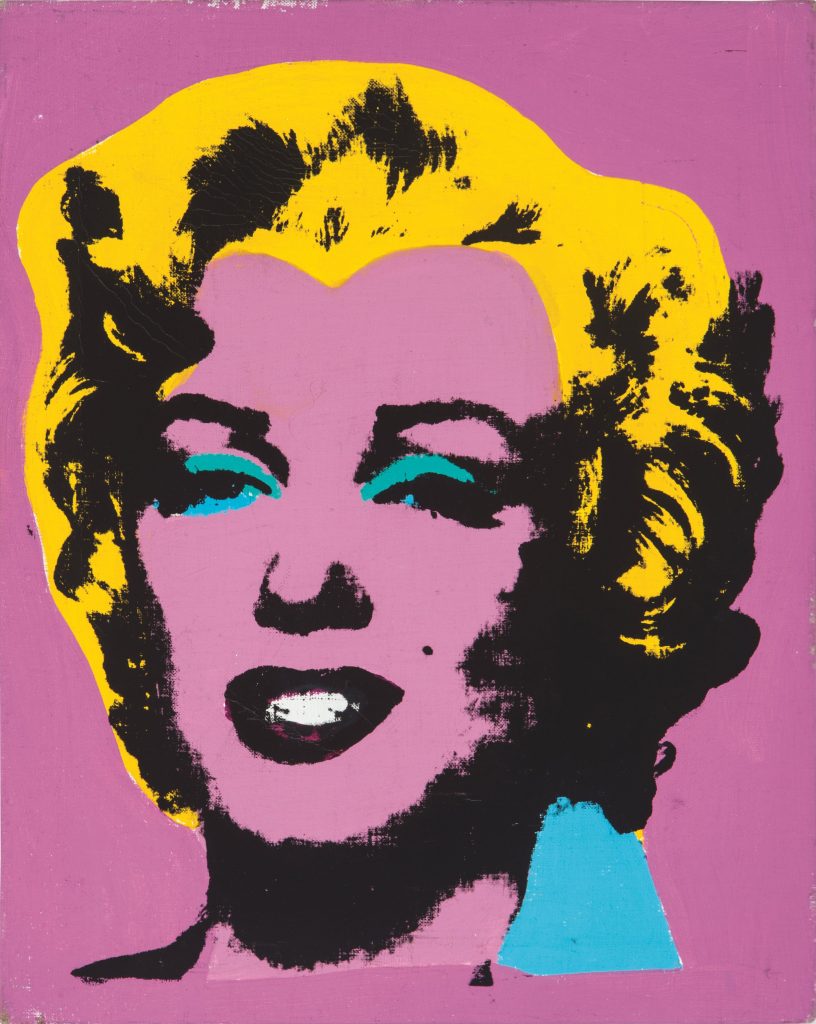Artnet Auctions Presents: Why This ‘Marilyn’ by The Conceptual Artist Sturtevant Challenges Notions of Authorship and Authenticity


Artnet Auctions

Scholars have referred to Study for Warhol’s Marilyn from 1965 as “a Warhol that isn’t by Warhol,” but artist Sturtevant’s 1965 rendition of the classic Pop piece has a story all its own. Available for bidding now through November 19 in our Post-War & Contemporary Art sale on Artnet Auctions, Study for Warhol’s Marilyn shows Sturtevant examining notions of appropriation, creation, and authorship.
Born Elaine Sturtevant, the artist known professionally as simply Sturtevant began her radical practice in the 1960s. Although she is often associated with the Pictures Generation of appropriation artists from the 1970s and ‘80s—which included pioneers like Richard Prince, Richard Pettibone, and Sherrie Levine—Sturtevant remade and even exhibited appropriation works even earlier, in the 1960s, showcasing re-creations of works by Jasper Johns, Roy Lichtenstein, Robert Rauschenberg, and of course, Andy Warhol.
Sturtevant’s appropriation of the Warhol Marilyn began just a few weeks after Warhol debuted the series. Warhol’s Marilyn was, in turn, itself appropriation of an existing photo of the actress. To make her versions of the work, Sturtevant conferred with Warhol’s assistants and even borrowed some of his silkscreens. Warhol once claimed Sturtevant knew his screening process better than the artist himself: when asked how he made his work, the Pop phenom replied, “Ask Elaine.”
As part of the experience of the work, Sturtevant intended the viewer to initially assume the author of the work to be Warhol. With this act, Sturtevant laid the foundation for generations of artists to come and placed her practice in the direct line of succession from Marcel Duchamp and other conceptual artists.

Works by Sturtevant consistently out-perform their high estimates at auction.
In recent years, Sturtevant’s work has achieved strong secondary market results. In 2014, a major retrospective at the Museum of Modern Art led to renewed interest in her work, and that same year, one of her Lichtenstein re-creations sold for $3.4 million at Christie’s (It’s worth noting that Lichtenstein also loaned her one of his signature dot stencils). This past year, four appropriations of artworks by Castelli-generation figures (including Warhol) sold for six-figures at or above their high estimates. Sturtevant’s Marilyns in particular have often achieved over $300,000 at auction in the last decade, and her estate’s representation by Galerie Thaddaeus Ropac ensures an international appeal and collector base.
From a historical perspective, Sturtevant’s use of the original Warhol silkscreen is outright revolutionary; her appropriation presented Warhol like a Renaissance master whose work needed to be replicated to be appreciated by the masses. Estimated at $250,000–300,000 in our sale, Study for Warhol’s Marilyn from 1965 represents an excellent opportunity for anyone looking to add a stellar mid-century work to a collection of 20th-century art.
To learn more, click here to view the lot page on Artnet Auctions.
Please don’t hesitate to reach out to the specialist for this lot, Johannes Vogt, with any questions.

Head of Contemporary Art
+1 (212) 497-9700 ext. 138